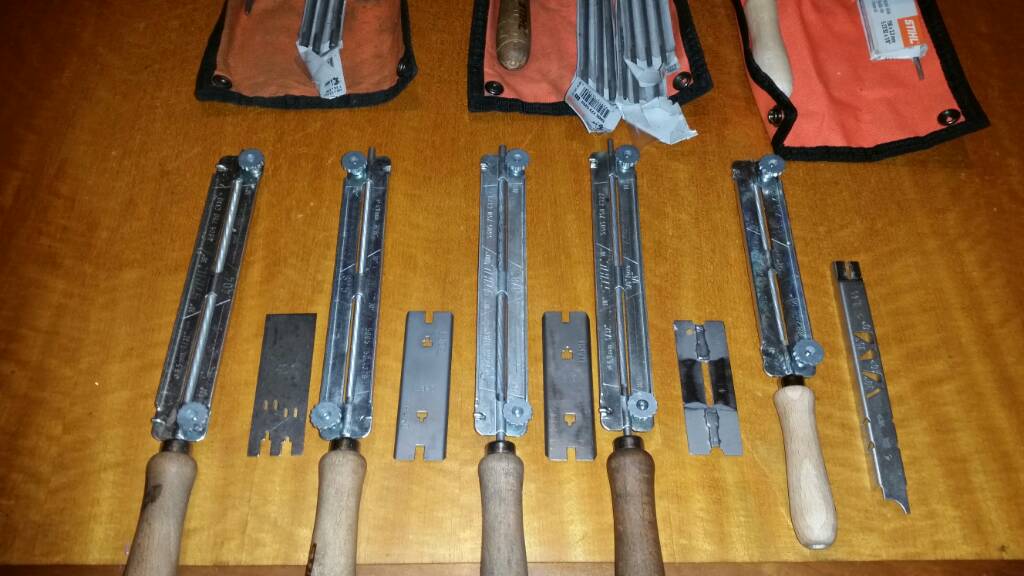ANewSawyer
Addicted to ArboristSite
According to the markings on the bar, the chain should be .050, which means the numbers on the drivers (the parts of the chain that goes into the bar slots) should be either 72 or 76. To me, it looks like it is a 72LG chain, and if it says 72 on the drivers it is. If so, the blue bodied Husky roller guide will fit. It will not fit if it says 76, but it doesn't look like it is such a chain to me.
Anyway, it looks like the chain is in good general condition, but it certainly needs some strokes with a file.
The tie straps are marked "SW" and the drivers 50a











